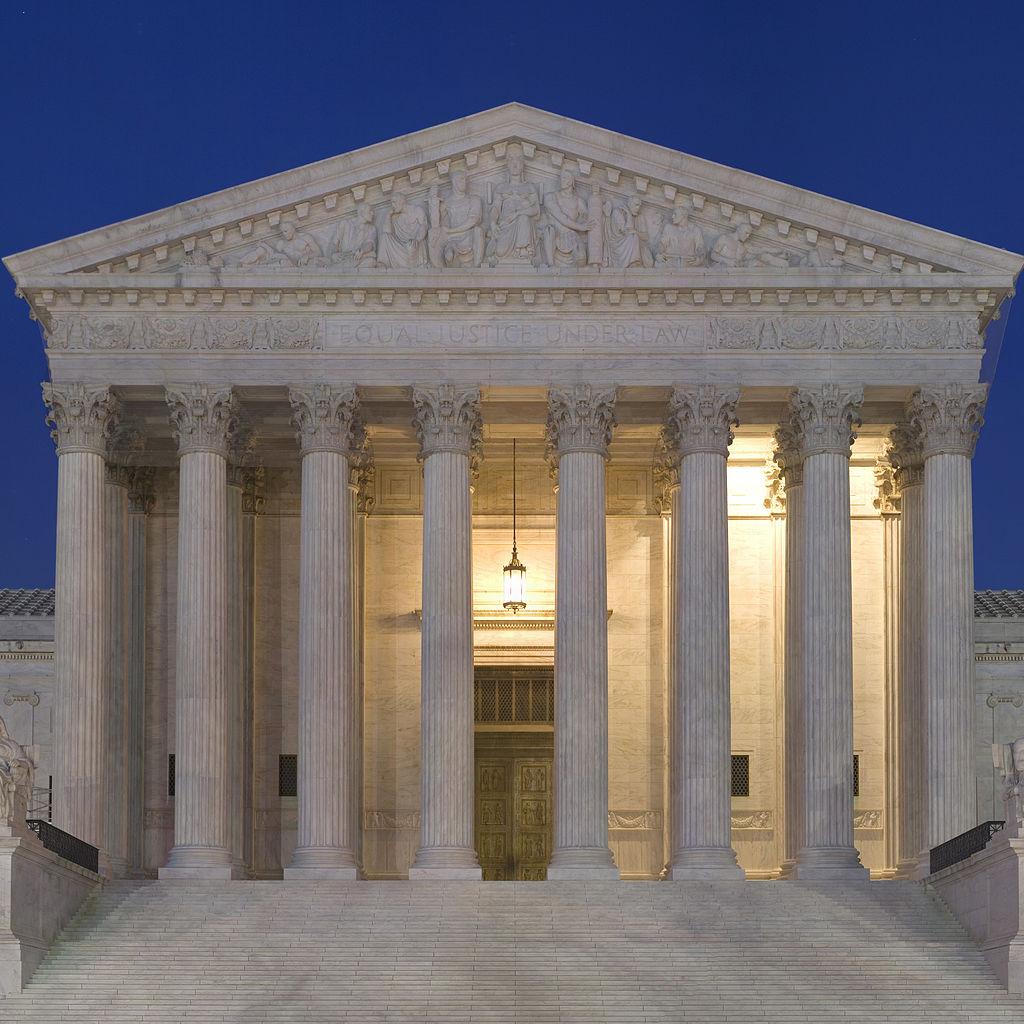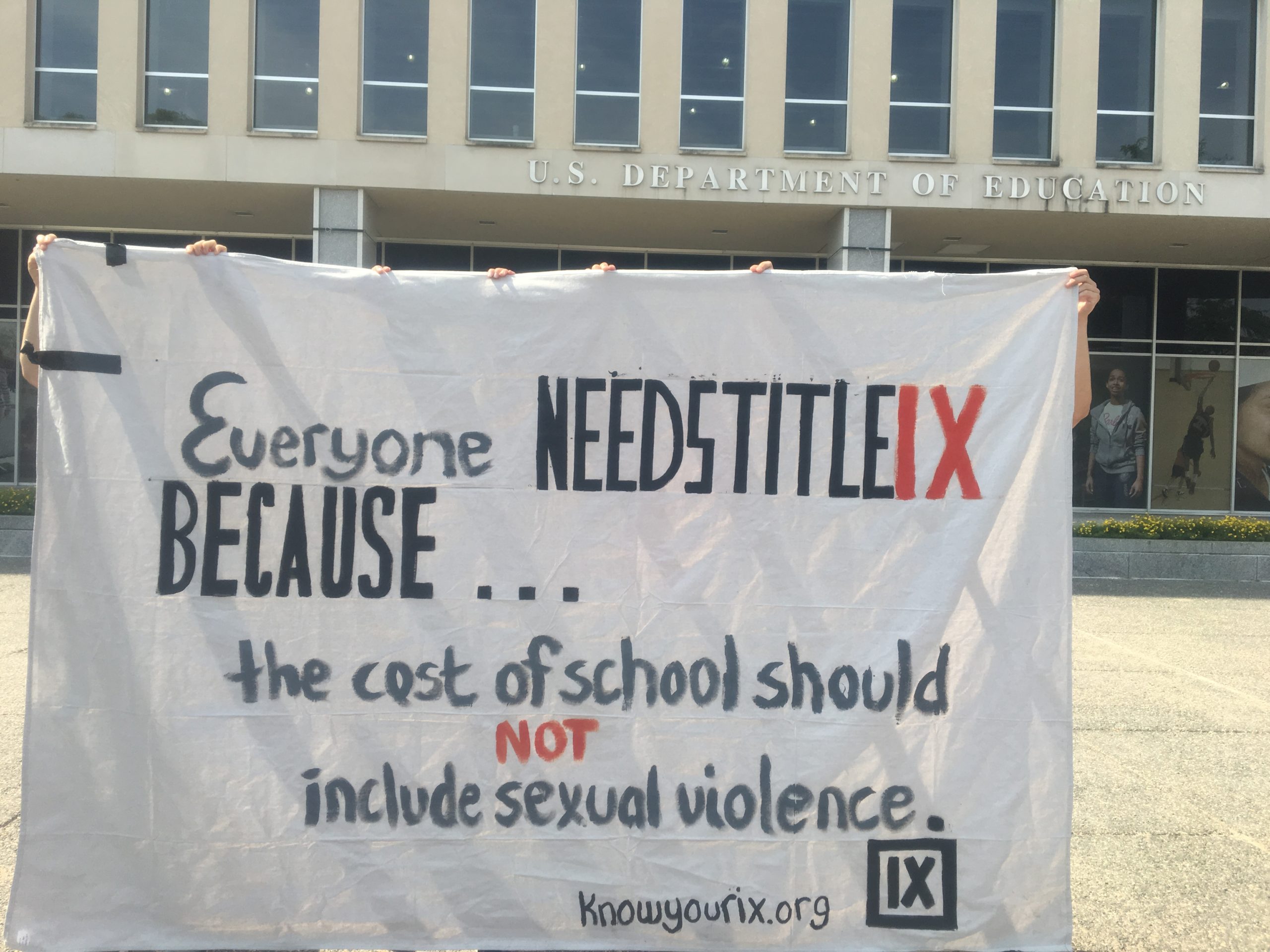Betsy DeVos’ “Interim Guidance” Is Dangerous, but You Still Have Rights Under Title IX

Last Friday, Betsy DeVos and the Department of Education rescinded Title IX guidance from 2014 and 2011 on what schools are required to do to protect students from sexual harassment and violence. In their place, the Department issued interim guidance that eviscerated many key protections.
Below, I’ll outline which student rights remain protected and which duties schools are still required to carry out despite the new interim guidance. In separate posts, I’ve also explained how the 2017 guidance hurts survivors and how DeVos has made things even more confusing for schools.
You still have rights under Title IX
1. Title IX still covers private schools and K-12 schools.
Title IX applies to all schools that receive federal funding—including private colleges and universities that participate in the Federal Student Aid program and most K-12 public schools. If a school knows—or “should reasonably have known”—about the harassment or violence, then it is responsible for addressing the problem. And as per the 2001 guidance—which has not been rescinded, schools have this responsibility even if no formal complaint has been filed and even if there is a concurrent law enforcement investigation.
2. Title IX still protects all students, regardless of sexual orientation and gender identity.
Schools must address all incidents of sexual harassment, including same-sex harassment, gender-based harassment, and harassment of male students. While Title IX doesn’t directly ban discrimination based on sexual orientation or gender identity, the 2001 guidance—which has not been rescinded—is very clear that Title IX protects all LGBTQ students: “sexual harassment directed at gay or lesbian students” and “gender-based harassment, including that predicated on sex stereotyping” are covered by Title IX if it is “sufficiently serious to limit or deny a student’s ability to participate in or benefit from the school’s program.”
3. Title IX still covers off-campus incidents and isolated incidents of harassment.
If harassment creates a “hostile environment” on-campus, then the school is responsible for taking action. This includes harassment that initially occurred on the internet or off campus (e.g., during a field trip, at an away game, at a house party). This also includes harassment by someone who is not a student or employee at the school (e.g., a visiting athlete, a guest speaker). And remember, the harassment does not have to be repeated—a single or isolated incident, like a sexual assault, may be enough to trigger Title IX.
So what is a “hostile environment”? Any environment that “den[ies] or limit[s] a student’s ability to participate in or benefit from the school’s programs or activities.” For example, if a student starts skipping class or drops out of an extracurricular in order to avoid their harasser or rapist, then the school environment has become hostile, and the school needs to respond.
4. Schools are still responsible for having formal Title IX procedures in place.
Schools must meet three procedural requirements: (1) distribute a nondiscrimination policy to all students, employees, and parents (if K-12); (2) designate at least one Title IX coordinator to oversee Title IX compliance; and (3) publish and adopt “grievance procedures” to address sex discrimination (which includes harassment and violence).
5. Investigations must still be “adequate, reliable, and impartial.”
All investigators and adjudicators must be trained on Title IX and sexual harassment/violence, and they cannot have any conflicts of interest. For example, the dean of students, athletics director, and general counsel may have some conflict of interest and should not be an investigator or adjudicator.
Technically, both students must have the same rights and opportunities to participate in the investigation. According to the new interim guidance, both sides must have the same right to present evidence, call witnesses, have a lawyer or advisor attend hearings, have that lawyer or advisor speak at hearings, cross-examine the other side, submit questions for a third party to ask the other side, etc. Both sides must receive written notice before any interview or hearing so that they have enough time to meaningfully prepare. And at the end of the investigation, the school must inform both sides about the outcome at the same time, in writing.
But I said technically. Because the new interim guidance also says that schools have the option of making appeals available only to the perpetrator. In other words, special rights for actual and accused rapists.
6. Schools are still required to disclose the findings of an investigation to both sides at the same time.
As mentioned earlier, schools must inform both sides about the “results” at the same time, in writing, including whether or not they can file an appeal. What are the “results” in a Title IX investigation?
For all investigations, the “results” include whether or not the alleged conduct occurred, what individual remedies are available to the reporting student, and what actions will be taken by the school to eliminate the hostile environment as a whole.
The “results” also include the following:
- If the investigation is conducted by a K-12 school or if it involves sexual harassment (but not sexual violence) at the college level, then the school must inform the reporting student about any sanctions imposed on the perpetrator that “directly relate” to the reporting student, like a no-contact order.
- If the investigation involves sexual violence at the college level, then the Clery Act requires schools to inform the reporting student of all sanctions imposed on the perpetrator, regardless of whether or not they “directly relate” to the reporting student.
Despite a common misconception, none of these disclosures violate the Family Educational Rights and Privacy Act of 1974 (FERPA). Congress has clearly stated that nothing in FERPA “shall be construed to affect the applicability of” Title IX.
Here’s what you can do to support Title IX
The new interim guidance is trash. It hurts survivors, makes schools less safe, and creates uncertainty for school administrators. But here’s the thing – schools can choose not to follow it. Here’s what you can do to help spread the word:
Fact sheets (~2 pages each):
- Mythbusting Title IX: Dispel 8 common myths about Title IX
- Sexual Violence & Title IX: What schools must do to address sexual violence
- FERPA & Title IX: Despite what some schools believe, disclosures required by Title IX do not conflict with the Family Educational Records Privacy Act (FERPA).
- LGBTQ Students & Title IX: Title IX prohibits gender-based harassment—harassment based on a student’s nonconformity with stereotypes of masculinity and femininity, which includes sexual orientation and gender identity.
- Cyberbullying & Title IX: Schools are required to address sexual harassment that occurs via text messages, instant/direct messages, emails, videos, social media pages, etc.
Authors
-
Senior Counsel for Education and Workplace Justice





